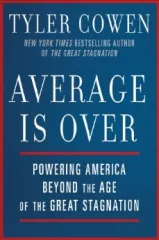Isaac Asimov, the astonishingly prolific science fiction writer, died in 1992, but he foresaw much about American politics today. One of his most profound works is the neglected short story “Franchise,” written in 1955, in the days when computers were bulky, room-sized machines powered by vacuum tubes and operated by a high priesthood of punch card-wielding technicians. For a work of fiction, it is stunningly prescient.
Isaac Asimov, the astonishingly prolific science fiction writer, died in 1992, but he foresaw much about American politics today. One of his most profound works is the neglected short story “Franchise,” written in 1955, in the days when computers were bulky, room-sized machines powered by vacuum tubes and operated by a high priesthood of punch card-wielding technicians. For a work of fiction, it is stunningly prescient.
In Asimov’s tale, set in November 2008, democratic elections have become nearly obsolete. A mysterious supercomputer said to be “half a mile long and three stories high,” named Multivac, absorbs most of the current information about economic and political conditions and estimates which candidate is going to win. The machine, however, can’t quite do the job on its own, as there are some ineffable social influences it cannot measure and evaluate. So Multivac picks out one “representative” person from the electorate to ask about the country’s mood (sample query: “What do you think of the price of eggs?”). The answers, when combined with the initial computer diagnosis, suffice to settle the election. No one actually needs to vote.
Asimov was on to something: American political campaigns have indeed become extraordinarily sophisticated data-mining operations driven by smart computers, harvesting and sifting through vast virtual warehouses of demographic information and consumer preferences to manipulate and shape the electorate. They may not do the voting for us, but this new generation of intelligent machines can do just about everything else. And when it comes to humans actually casting their ballots, well, we hardly are surprised by the results: Computer-powered data jocks such as Nate Silver can predict the outcomes of most races and often the margins of victory as well. We’re not too far off from the world of Asimov’s protagonist, an Indiana department-store clerk dragooned into being America’s lone “voter.” “From the way your brain and heart and hormones and sweat glands work, Multivac can judge exactly how intensely you feel about the matter,” the machine operators tell him. “It will understand your feelings better than you yourself.”
Nearly 60 years after Asimov anticipated a decidedly dramatic intrusion of machines into our politics, we may not (yet) be offloading our democratic responsibilities to computers, but we are empowering them to reshape our economy and society in ways that could be just as profound. The rise of smart machines—technologies that encompass everything from artificial intelligence to industrial robots to the smartphones in our pockets—is changing how we live, work and play. Less acknowledged, perhaps, is what all this technological change portends: nothing short of a new political order. The productivity gains, the medical advances, the workplace reorganizations and the myriad other upheavals that will define the coming automation age will create new economic winners and losers; it will reorient our demographics; and undoubtedly, it will transform what we demand from our government.
You see, Linda, till about forty years ago, everybody always voted.”… “How did all the people know who to vote for? Did Multivac tell them?” Matthew’s eyebrows hunched down and he looked severe. “They just used their own judgment, girl.” —Isaac Asimov, Franchise
Whether they’re doing mechanical labor or sorting data inside your computer, automatons are increasingly taking over human jobs, even in white-collar professions: By 2016, some 95,000 service robots worth roughly $17 billion—machines that work in everything from medicine to agriculture to defense—are expected to have been added to the global workforce. Here are just a few of the more surprising jobs they’re beginning to take on.
The rise of the machines builds on deeper economic trends that are already roiling American society, including stagnant growth since 2001 and a greater openness to trade and foreign outsourcing. But it’s the rapid increase in machines’ ability to substitute for intelligent human labor that presages the greater disruption. We’re on the verge of having computer systems that understand the entirety of human “natural language,” a problem that was considered a very tough one only a few years ago. We’re close to the point when we can fit the (articulable) knowledge of the entire world into the palm of our hands. Self-driving cars are making their way onto streets in California and Nevada. Whether you are a factory worker or an accountant, a waitress or a doctor, this is the wave that will lift you or dump you.
Even the robots so familiar from vintage science fiction are now really making their mark. Worldwide annual shipments of industrial robots have more than doubled in the past decade, according to the International Federation of Robotics. Taiwan’s Foxconn, the world’s largest contract electronics manufacturer, announced in 2011 that it would increase the use of robots in its factories one hundredfold, bringing its total to 1 million robots by 2014. South Korea is experimenting with robotic prison wardens that patrol and report inmates who do something wrong; Japanese restaurants are deploying fast-food robots to make and serve sushi.
Meanwhile, lower-level tasks are now being automated by software programs, changing newsrooms, law firms, hospitals and countless other workplaces. Automation and other productivity improvements are expected to have eliminated 2.2 million business-services jobs in the United States and Europe from 2006 to 2016, at a rate of about 200,000 jobs annually, according to the Hackett Group, a Miami-based consultancy.
As one joke making the rounds has it, “A modern textile mill employs only a man and a dog—the man to feed the dog, and the dog to keep the man away from the machines.” That is the world in which we now live.
